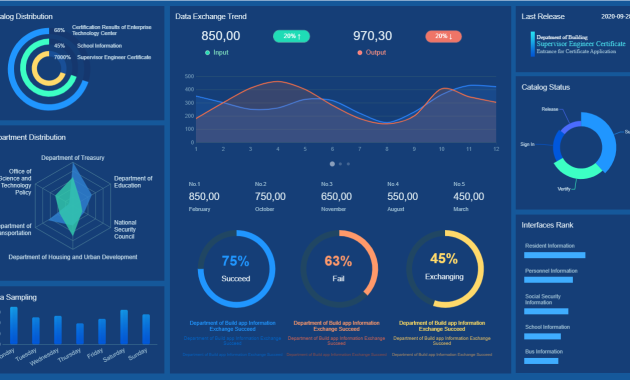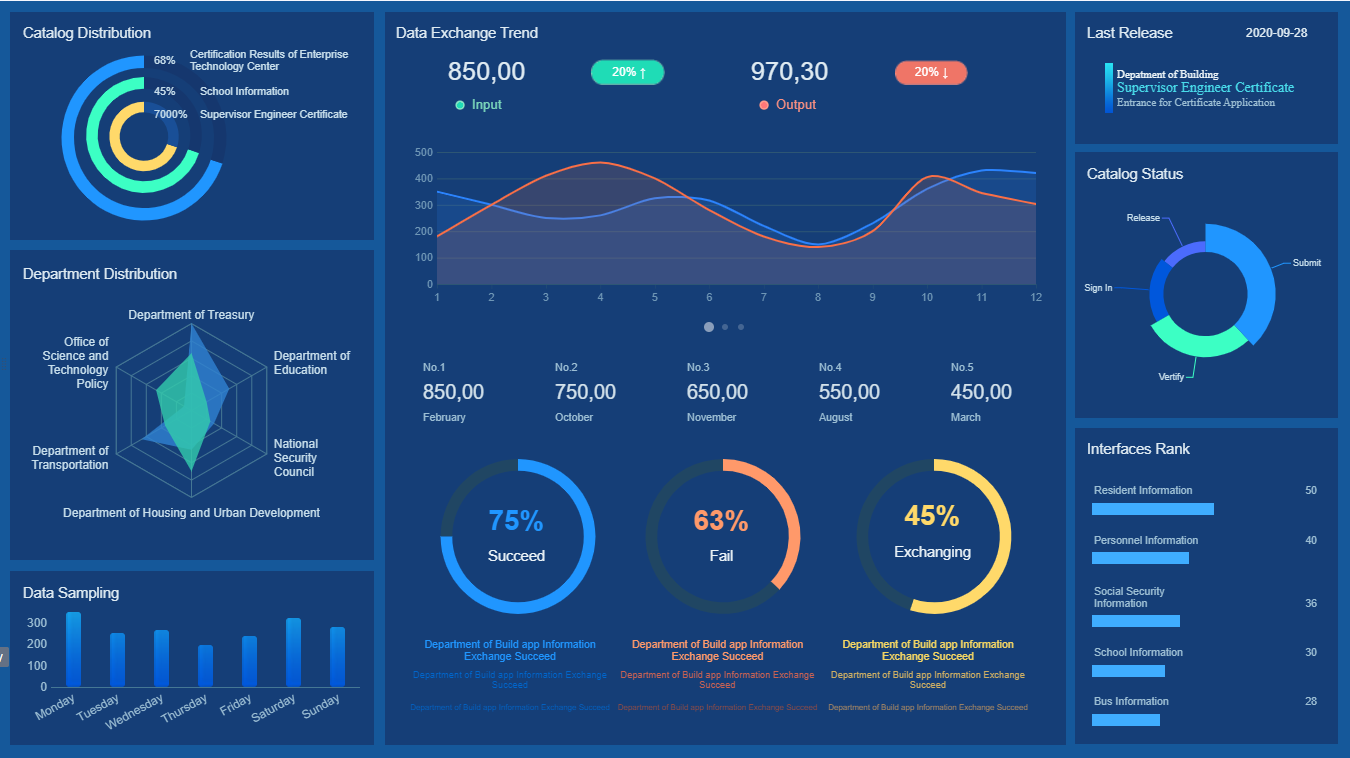
Advanced Tactics in Business Intelligence Software That Drives ROI
In today’s data-driven business landscape, the ability to extract actionable insights from raw data is no longer a luxury; it’s a necessity. Business Intelligence (BI) software has emerged as a crucial tool for organizations seeking a competitive edge. However, simply deploying BI software isn’t enough. To truly realize a significant return on investment (ROI), businesses must embrace advanced tactics. These tactics move beyond basic reporting and delve into sophisticated analytics, predictive modeling, and data-driven decision-making. This article explores these advanced tactics, providing practical insights and real-world examples to help businesses maximize their BI investments and drive tangible ROI.
Unveiling the Power of Advanced Analytics
At the heart of effective BI lies advanced analytics. This goes beyond standard descriptive reporting, which simply tells you what happened. Advanced analytics focuses on why things happened and, more importantly, what will happen. It encompasses a range of techniques, including:
- Predictive Analytics: This uses statistical techniques and machine learning algorithms to forecast future trends and outcomes. For example, a retailer can use predictive analytics to forecast sales, optimize inventory, and personalize customer experiences.
- Prescriptive Analytics: This takes predictive analytics a step further by recommending specific actions to optimize outcomes. For instance, a logistics company can use prescriptive analytics to determine the most efficient delivery routes, minimizing fuel costs and delivery times.
- Data Mining: This involves discovering patterns and insights from large datasets. Data mining techniques can uncover hidden relationships, identify customer segments, and reveal opportunities for process improvement.
Implementing advanced analytics requires a robust BI platform capable of handling complex calculations, data integration, and visualization. [See also: Data Integration Strategies for Business Intelligence Success]
Harnessing the Potential of Data Visualization
Data visualization is a critical component of advanced BI. It transforms complex data into easily understandable visual representations, such as charts, graphs, and dashboards. Effective data visualization enables users to:
- Identify Trends and Patterns: Visualizations make it easier to spot trends, outliers, and correlations that might be missed in raw data.
- Communicate Insights Effectively: Visualizations facilitate clear and concise communication of complex information to stakeholders.
- Make Data-Driven Decisions: Visualizations empower users to quickly grasp the key insights and make informed decisions based on data.
Modern BI software offers a wide range of visualization options, including interactive dashboards, geospatial maps, and custom visualizations. Choosing the right visualization tools is crucial for communicating insights effectively. The best BI software provides interactive dashboards to users. These dashboards should clearly communicate key metrics and allow users to explore the data further.
Integrating Data Sources for a Unified View
One of the biggest challenges in BI is integrating data from various sources. Businesses often have data scattered across multiple systems, including CRM, ERP, marketing automation platforms, and databases. Effective data integration ensures a unified view of the business, providing a complete picture of performance. Key strategies for successful data integration include:
- Data Warehousing: This involves creating a centralized repository for all data, making it easier to access and analyze.
- ETL (Extract, Transform, Load): This process extracts data from various sources, transforms it into a consistent format, and loads it into the data warehouse.
- Data Governance: This ensures data quality, consistency, and security across all systems.
A well-integrated data infrastructure is essential for accurate and reliable BI. It allows for holistic analysis and prevents data silos. [See also: The Importance of Data Governance in Business Intelligence]
Leveraging Machine Learning and Artificial Intelligence
Machine learning (ML) and artificial intelligence (AI) are rapidly transforming the BI landscape. These technologies enable businesses to automate data analysis, identify patterns, and make more accurate predictions. Some specific applications include:
- Automated Insights: AI-powered BI tools can automatically identify key insights and anomalies in the data, saving time and resources.
- Predictive Modeling: ML algorithms can be used to build more sophisticated predictive models, improving the accuracy of forecasts.
- Natural Language Processing (NLP): NLP allows users to interact with BI tools using natural language, making it easier to ask questions and get answers.
Integrating ML and AI into BI requires a platform that supports these technologies. This may involve using specialized BI tools or integrating with existing ML and AI platforms.
Implementing a Data-Driven Culture
While advanced BI software is essential, it’s only one piece of the puzzle. To truly drive ROI, businesses must foster a data-driven culture. This involves:
- Training and Education: Providing employees with the skills and knowledge to use BI tools effectively.
- Data Literacy: Promoting data literacy across the organization, so employees understand how to interpret and use data.
- Decision-Making Based on Data: Encouraging data-driven decision-making at all levels of the organization.
A data-driven culture ensures that BI insights are used to inform decisions and drive actions. This results in greater ROI from the BI investment. [See also: Building a Data-Driven Culture: Best Practices]
Measuring and Optimizing ROI
Measuring the ROI of BI software is crucial for demonstrating its value and identifying areas for improvement. Key metrics to track include:
- Cost Savings: Measure the cost savings achieved through process optimization, automation, and improved efficiency.
- Revenue Growth: Track revenue growth resulting from improved sales performance, customer acquisition, and product development.
- Improved Decision-Making: Assess the impact of data-driven decisions on key business outcomes.
- Increased Employee Productivity: Measure the increase in employee productivity through access to data and insights.
Regularly reviewing and optimizing the BI implementation is essential for maximizing ROI. This includes evaluating the effectiveness of the BI tools, identifying areas for improvement, and making adjustments as needed.
Real-World Examples of Advanced Tactics in Action
Let’s explore some real-world examples of how businesses are using advanced tactics in BI to drive ROI:
- Retail: A major retailer uses predictive analytics to forecast demand, optimize inventory levels, and personalize customer recommendations. This leads to reduced inventory costs, increased sales, and improved customer satisfaction.
- Healthcare: A healthcare provider uses BI to analyze patient data and identify patients at risk of readmission. This allows them to proactively intervene and reduce readmission rates, improving patient outcomes and reducing costs.
- Manufacturing: A manufacturing company uses BI to monitor production processes and identify areas for improvement. This leads to increased efficiency, reduced waste, and improved product quality.
These examples highlight the power of advanced tactics in BI. They demonstrate how businesses can use data to achieve tangible results and drive significant ROI.
Choosing the Right BI Software
Selecting the right BI software is a critical step in implementing advanced tactics. Consider the following factors:
- Features and Functionality: Ensure the software offers the advanced analytics, data visualization, and integration capabilities you need.
- Scalability: Choose a platform that can scale to meet your future data and user needs.
- Ease of Use: Select a user-friendly platform that is easy for employees to learn and use.
- Integration Capabilities: Ensure the software integrates with your existing data sources and systems.
- Cost: Consider the total cost of ownership, including software licensing, implementation, and maintenance.
Thoroughly evaluate different BI software options before making a decision. This ensures you select the best platform for your specific needs.
Conclusion: Embracing the Future of Business Intelligence
Advanced tactics in Business Intelligence software are no longer a luxury; they are a necessity for businesses seeking to thrive in today’s competitive landscape. By embracing advanced analytics, data visualization, data integration, machine learning, and a data-driven culture, organizations can unlock the full potential of their data. This leads to improved decision-making, increased efficiency, and ultimately, a significant return on investment. As businesses continue to generate vast amounts of data, the importance of advanced BI tactics will only continue to grow. Embracing these tactics is key to future success.

